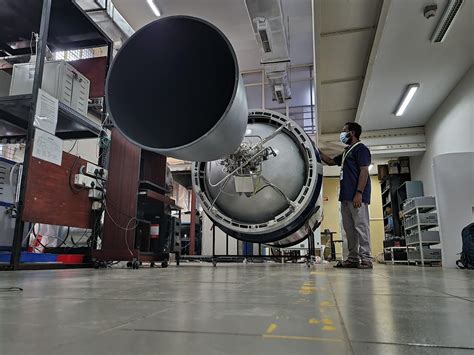In a dazzling feat of engineering combined with innovation, an Indian startup, Agnikul Cosmos, manufactured a rocket engine through 3D printing in a record time of just 72 hours. This achievement places the company at an intriguing intersection of cutting-edge technology and practical application in the field of aerospace. While this development sounds remarkable, let’s delve deeper into the implications and the broader context of such advancements within the aerospace industry.
There’s a fascinating dynamic at play here—the rapid pace of 3D printing technology is akin to rewiring the traditional manufacturing processes that dominate aerospace engineering. Constructing a rocket engine using conventional techniques typically requires months along with a rigorous set of post-manufacturing qualification tests to ensure the engine meets the exacting industry standards. Using a metal 3D printer from German company EOS, Agnikul Cosmos produced its engine from Inconel, a high-performance alloy of nickel and chromium capable of withstanding high temperatures and immense mechanical loads. This transformation arguably shortens a notoriously long production timeline to mere hours. Moreover, the automation promises a detailed report of any deviations during the printing process, purportedly eliminating the need for post-fabrication qualification.
However, the trailblazing approach by Agnikul has not been without its share of skepticism and scrutiny. Comments within the industry echo caution rather loudly. It’s worth noting that 3D printing, particularly in aerospace, is not an entirely new endeavor. Companies like Relativity Space, Rocket Lab, and even space juggernaut SpaceX have ventured into this technology, employing additive manufacturing for various components such as fuel injectors, thrusters, and other intricate parts that traditional manufacturing could hardly replicate effectively. Nonetheless, engineers and experts alike are wary of the claim that post-manufacturing qualifications could be forgone altogether; traditionally rigorous checks and balances are a bedrock of aerospace engineering due to the high stakes involved.
The importance of Quality Assurance (QA) in rocket component manufacturing cannot be overstated. Ensuring that each minuscule piece performs optimally under extreme conditions is paramount. The internet buzz has raised legitimate concerns regarding Agnikul’s assertion on QA. As @mlindner commented, “3D printing is already an industry standard and nothing this company did with relation to its engine manufacturing is anything special. They also appear to have lied that no post-manufacturing qualification is required.” This reflects the broader sentiment that skipping extensive validation might sound cost-efficient in theory but poses a high risk when put into practice, particularly in missions where payload and mission success hinge precariously on the full integrity of the rocket engine.
Yet, it’s not all skepticism. There’s also an air of admiration for the potential military and commercial applications of such rapid manufacturing capabilities. This could revolutionize how small satellites and other payloads are deployed, making space more accessible not just to nation-states but also to private enterprises. Moreover, considering the competitive landscape—with players like China, the US, and Russia heavily investing in space and missile technology—this breakthrough symbolizes a significant milestone for startups from India. @greekanalyst insightful comment lends perspective, “India has enormous potential and it is amazing to witness the rise of its tech scene”. This underscores the importance of such technological advancements in contributing to national security and placing India in a favorable stance within the global aerospace industry.
In conclusion, while the technological breakthrough of 3D printing a rocket engine in just 72 hours is indeed captivating, it’s crucial to continue scrutinizing the claims and ensuring that rigorous testing and quality assurance remain integral parts of the process. Agnikul Cosmos might be breaking new ground, but they are also building upon a field rich with innovation from multiple predecessors. The discussions, both supportive and critical, are vital in pushing the boundaries while ensuring the safety and reliability that are the hallmarks of aerospace endeavors.


Leave a Reply